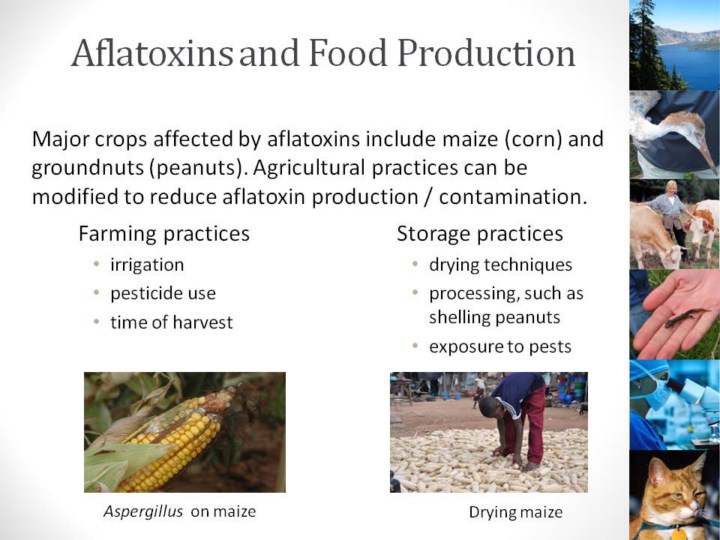 |
Certain
crops are more susceptible to aflatoxin formation than others; maize (corn)
and peanuts are two key staples that are prone to extensive contamination.
Other staples such as rice and cassava may also be contaminated.
Contamination can occur at all stages of crop production: harvest, storage
and processing. Farming and storage practices which affect temperature,
humidity, and insect damage to crops can significantly impact aflatoxin
levels. Irrigation and pesticide use, timing of harvest, drying techniques,
and storage environment are all important. Irrigation and pesticide use
reduce stress on the plant thereby decreasing susceptibility to
Aspergillus
growth.
However, irrigation can also provide moisture that the fungus needs to grow.
Time of crop harvest, drying techniques, and storage conditions all affect
moisture content; lower moisture content decreases continued
Aspergillus
growth. Processing techniques and insects can physically spread the toxin.18
|
